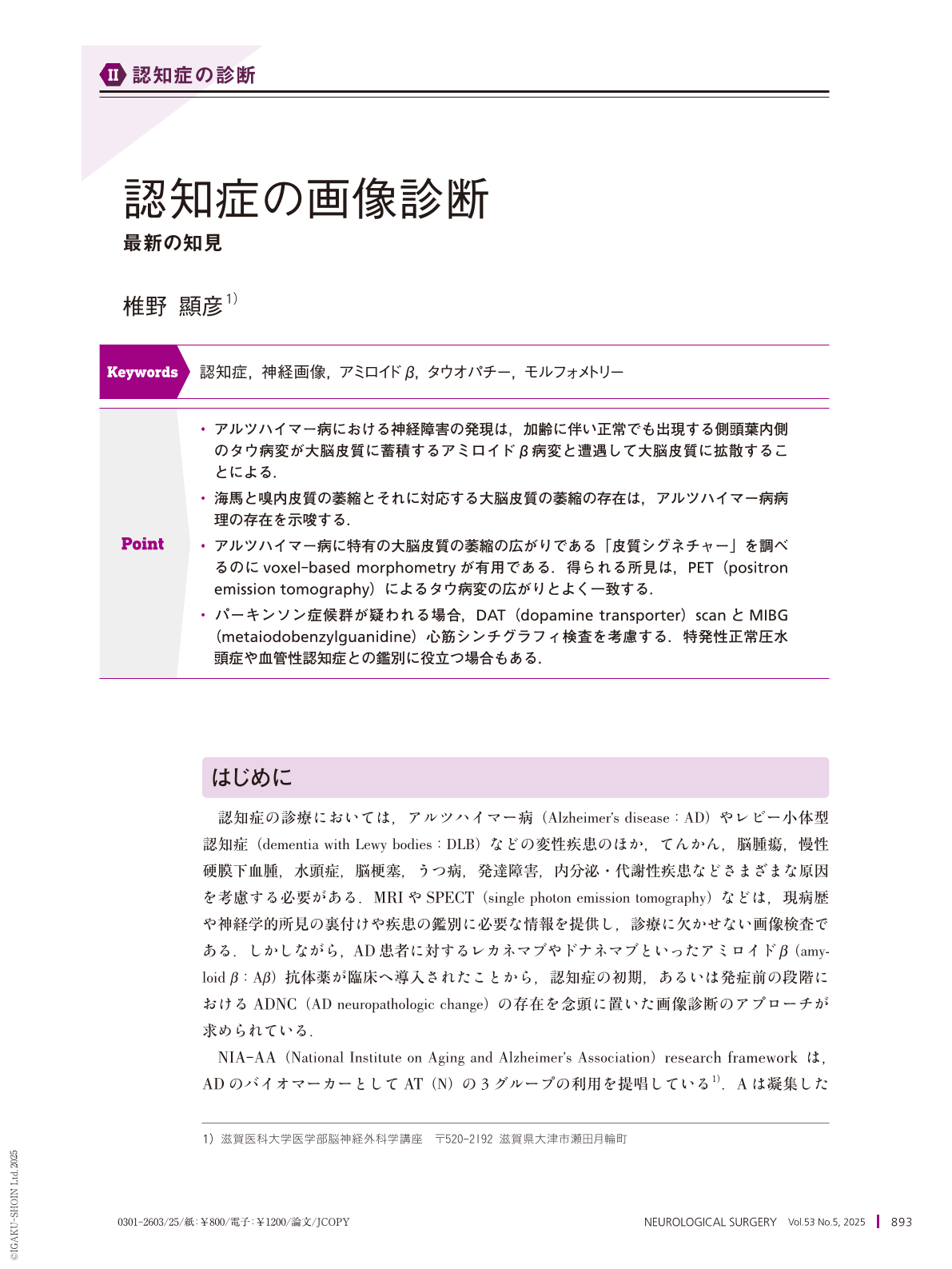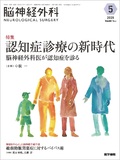Japanese
English
- 有料閲覧
- Abstract 文献概要
- 1ページ目 Look Inside
- 参考文献 Reference
Point
・アルツハイマー病における神経障害の発現は,加齢に伴い正常でも出現する側頭葉内側のタウ病変が大脳皮質に蓄積するアミロイドβ病変と遭遇して大脳皮質に拡散することによる.
・海馬と嗅内皮質の萎縮とそれに対応する大脳皮質の萎縮の存在は,アルツハイマー病病理の存在を示唆する.
・アルツハイマー病に特有の大脳皮質の萎縮の広がりである「皮質シグネチャー」を調べるのにvoxel-based morphometryが有用である.得られる所見は,PET(positron emission tomography)によるタウ病変の広がりとよく一致する.
・パーキンソン症候群が疑われる場合,DAT (dopamine transporter) scanとMIBG(metaiodobenzylguanidine)心筋シンチグラフィ検査を考慮する.特発性正常圧水頭症や血管性認知症との鑑別に役立つ場合もある.
With the clinical application of monoclonal antibody therapy for Alzheimer's disease (AD), diagnostic techniques are shifting toward molecular-targeted imaging. The development of tracers for positron emission tomography (PET) targeting abnormal proteins associated with the disease, such as amyloid-beta and tau, has enabled the detection of neuropathological changes in AD in vivo. This study will contribute to the clinical diagnosis, staging, and monitoring of potential therapeutic approaches for AD. In general outpatient care, imaging modalities that employ widely available techniques such as magnetic resonance imaging or single-photon emission computed tomography remain necessary. This article provides a synopsis of the American College of Radiology recommendations concerning the clinical utility of neuroimaging techniques and reviews the temporal progression of in vivo pathologies derived from amyloid and tau PETs. We investigated the methods for distinguishing between the AD continuum and SNAP in patients with mild cognitive impairment using the ADNI database. Accurate assessment of the “cortical signature” is essential for the diagnosis of AD. Voxel-based morphometry is a useful tool because cortical atrophy is associated with the extension of tau PET lesions. Confirmation of cortical atrophy in conjunction with hippocampal atrophy offers diagnostic insights that facilitate the identification of AD.

Copyright © 2025, Igaku-Shoin Ltd. All rights reserved.


